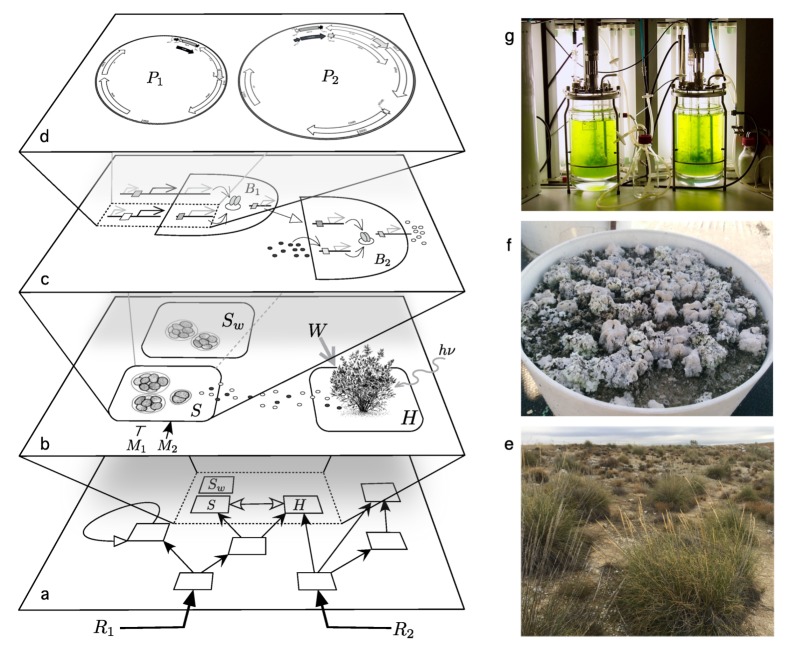Figure 2.
Terraforming the biosphere: Multiple levels are involved in the development of strategies for synthetic ecosystem terraformation based on synthetic biology (adapted from [20]). Several scales of complexity need to be considered. This includes (a) whole community dynamics. A mesoscale level (b) involving groups of a few relevant species, which can include synthetic candidates (here indicated as S) derived from a wild-type strain (here indicated as ) and a host H that in this case is a plant. At the cell level (c) we move into the definition and testing of cell circuits and their chassis. Finally, at the gene-sequence level (d) designed constructs need to be engineered to operate under predictable circumstances. In drylands (e) a key piece of the community architecture is provided by the soil crust, which can be experimentally manipulated (f) to test a diverse range of climate-related problems. Synthetic biology can help stabilize these communities, preventing them from crossing degradation thresholds or tipping points. One especially relevant candidate that can be easily cultivated in bioreactors (g) are cyanobacteria, which are known to play a crucial role in arid and semiarid ecosystems.

